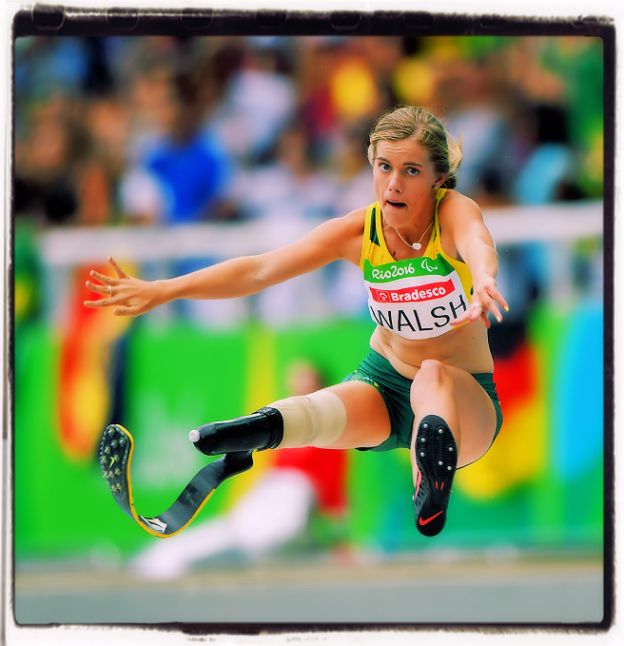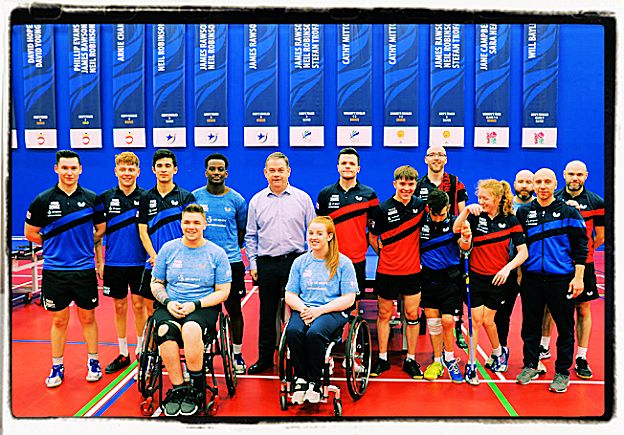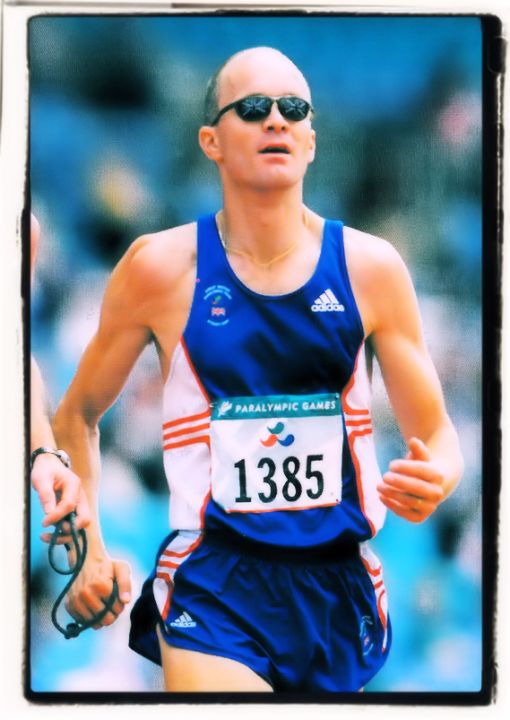
The Paralympic Games, an article that illustrates how this great sporting manifestation was born, with some famous athletes stories and their achievements.
If you want to know more about the Paris 2024 Summer Olympic Games visit its website. Follow the worlds top athletes as they go for gold in France (Jul 26-Aug 11, 2024). Paralympic Games – Wednesday 28 August to Sunday 8 September.
It never gets tiring coming to Paralympic Games and crossing the line first. It is like a fairytale that just doesn’t seem to end, each time I come out.
Jason Smyth
My dream was to win the World Championships and I did it. So I said my next dream was to win the Paralympics. So what’s my next dream? It is sleeping.
Daniel Martins
We are all humans, we spend almost all our career together so when a teammate suffers, I suffer too.
Omara Durand
The Olympic Games began in Greece about three thousand years ago. Only men could be Olympic athletes, and they wore nothing when they ran in Olympic races. All wars stopped for the Olympics in those days. The discus and the pentathlon began in these early Olympic Games. The marathon began when Greece was at war, and a soldier ran about forty-two kilometres from a town called Marathon to Athens to tell the people there about the Greeks winning the war. The soldier died soon after he arrived in Athens. In 394 the Romans stopped the Greek Olympic Games, because they didn’t like them.

In 1896, a Frenchman, Pierre de Coubertin, began the Olympic Games again. These days the Olympic Games usually happen every four years. They did not happen in 1916, 1940, or 1944 because there were wars in these years. Paralympic Games, athletic competition for people with disabilities, including amputees, people with impaired vision, paraplegics, and people with cerebral palsy. Fanie Lombaard, of course, is one of these disabled sportsmen. But how did the Paralympics begin? In the 1940s Sir Ludwig Guttmann was a doctor at the Stoke Mandeville hospital in England. At the hospital there were many disabled soldiers from World War II and Guttmann wanted these soldiers to get better by doing sports.
In July 1948, when the Olympic Games happened in London, Guttmann asked disabled soldiers to go to a sports meeting together at Stoke Mandeville. It was all very successful, so he did it again four years later in 1952. This time disabled soldiers from Holland came too. Because he worked a lot with disabled athletes in the 1940s and 1950s, people often call Sir Ludwig Guttmann “the father of the Paralympics”.
The Paralympics are younger than the Olympics, but they are getting bigger all the time. The first true Paralympic Games happened in Rome, a week after the 1960 Summer Olympic Games, in this occasion four hundred disabled athletes from twenty-three different countries competed in eight sports. At the Sydney Paralympics in 2000, there were 4,000 disabled athletes from 122 countries! The Paralympic games were initially open only to athletes in wheelchairs. All that changed in 1976 when athletes with different disabilities took part in the games.
Of the 23 sports at the Paralympic Games, only 4 are not included in the Olympic Games. These are Goal Ball, a team sport played by visually-impaired athletes who throw or roll a ball with a bell inside it, Boccia, a sport similar to lawn bowls played in teams of pairs, Wheelchair Rugby, and Powerlifting, similar to weightlifting, but using the upper body only.

Track events at the Summer Paralympics include the 100-meter, 200-meter, 400-meter, 800-meter, 1,500-meter, 5,000-meter, and 10,000-meter races. The 4 × 100 and 4 × 400 relays are also held. The field events are discus, javelin, shot put, high jump, and long jump. Other sports include archery, basketball, boccie (lawn bowls), bowling, cycling, equestrian events, fencing, goalball, judo, sailing, soccer, shooting, swimming, table tennis, tennis, volleyball, weightlifting, and wheelchair rugby. Events at the Winter Paralympics include Alpine and Nordic skiing, ice-sledge hockey, ice-sledge racing, and biathlon.
Modern technology has radically improved the range of possible activities for physically disabled people. As a result, the intensity of the competition at the Paralympics has increased. This in turn has increased publicity and financial support of the games. To compete in the Paralympic Games each athlete must meet rigorous qualifying standards that are categorized according to disability type and severity, and then be selected to his or her country’s team. The Paralympics are recognized and supported by the International Olympic Committee (IOC) and governed by the International Paralympic Committee (IPC).
These days there are Paralympic Games every four years, and because it’s easier for Paralympic athletes to stay in Olympic hotels and to run in Olympic stadiums, the Paralympics usually happen in the Olympic cities, too. Think of playing basket-ball in a wheelchair. Think of skiing with only one leg. Think of running when you can’t see in front of you. Disabled people can do some wonderful things! Here are the stories of some disabled athletes.
The first athlete with a disability to compete in the able-bodied Games was the German American gymnast George Eyser. He competed in 1904 with one artificial leg and won six medals in one day. In 2008, South African distance swimmer Natalie Du Toit was the second person to compete in both Games.
Bob Matthews is blind. He was born in England on May 26, 1961. Usually he works in an office, but he’s a very good runner in his free time In the Paralympic Games in Sydney 2000, he won two medals. He won a gold medal in the 10,000 metres and he came second in the 5,000 metres. In a race, blind athletes need a guide who can see and help them run. In the 10.000 metres, runners have two guides. The guides must be very fast and very strong. They run together with the blind athletes and are their “speaking eyes”. They tell them when there is someone in front of them or when they can run faster.

Bob is good at making people laugh. At the Sydney Olympics he said, “I want to 5,000 metres and 10,000 metres, but I’m running in the marathon only because I want to see all of Sydney cheaply!” He says he has the healthiest guide dog in Britain. His nine-year-old dog Quando always goes running with him when he’s training for a race.
Jean Driscoll was born in Wisconsin on November 18, 1966. Because there was something wrong with her back when she was born, she can’t walk and she has a wheelchair to move about in. But she can make that wheelchair go very fast!
Jean began playing wheelchair basketball when she was a young woman. Then she went to the University of Illinois, and there she became interested in wheelchair racing. She won the Boston Marathon for wheelchair athletes eight times and she is the only athlete, able-bodied or disabled, to do that. From 1988 to 2000 she won five gold medals in the Paralympic Games; and she came second in the 800-metres wheelchair race in the Olympic Games in 1992 and 1996.
Like Fanie Lombaard, Jean wants people to call her an athlete and not a disabled athlete. She wants people to speak well of disabled athletes for being good at their sport and not only for being disabled sportsmen and sportswomen. Jean wants more disabled people to do great things too. She gives talks on television and in 2000 she wrote a book about her story. “Dream big, and work hard,” she says to everyone. She now lives in Champaign, Illinois, and there is a street in Champaign called “Jean Driscoll Lane”.
Diana Golden was born in New England in the USA. She began skiing when she was a little girl and she dreamt of being a famous skier one day. Then, at the age of twelve, her right leg suddenly broke one winter day after an afternoon’s skiing. In hospital the doctor looked at it carefully and then told her, “We’re afraid you have cancer in your leg. so were going to take it off.” A few days later, in hospital, Diana called her doctor. “Can I ski with one leg?” she asked him. “Of course, you can!” he said. Two months later, Diana was skiing again. Things weren’t easy for her. She was only a child after all. But she trained every day and she became very good at her sport. She won ten world championships and an Olympic gold medal for her skiing.
But the most important day of her life was in 1987. She didn’t win the race that day: she came in at number ten. But it was a world championship race and she was the only disabled person competing with able-bodied skiers. Diana said, “When I was at school children laughed at me because I had only one leg. But now I’m faster than some athletes with two legs!” Sadly, Diana Golden could not win her fight with cancer, and she died on August 25, 2001 at the age of thirty-eight.

American track-and-field athlete Jackie Joyner-Kersee was the first woman to win consecutive heptathlons at the Olympic Games and the first to amass more than 7000 points in the competition. In addition to her gold medals at the Olympic Games in 1988 and 1992, she also won a silver medal in the heptathlon at the 1984 Olympics. Over a two-day period, heptathletes score points in each of the competition’s seven events: 100-meter hurdles, high jump, shot put, 200-meter dash, long jump, javelin, and 800-meter race. The heptathlete with the most overall points wins the competition.
These sportsmen are only some of the true heroes of sport from different times and from different countries in the world. There are many more. Who is your favourite sports hero of yesterday or today? Where do they come from and why do you like them? And who are going to be the sports heroes of tomorrow? Perhaps they can teach us something important too.
You can also read:


